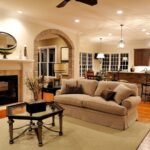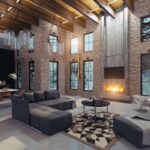Fleetwood mobile houses have been the foundation for American housing for a long time with their affordability, long-lasting durability, and practical design. In addition to their numerous choices, the older Fleetwood mobile home floor plans have a special place in the hearts of homeowners and other enthusiasts. These classic designs reflect the time of practicality and modernity, mixing convenience with the efficient utilization of space. It doesn’t matter if you’re trying to revive an old home, get the inspiration to design a contemporary renovation or enjoy the past of the mobile home style. Understanding these floor plans will provide valuable insights into the past construction time.
The Appeal of Old Fleetwood Mobile Home Floor Plans
The attraction of classic Fleetwood mobile floor plans lies in their simple design and efficiency. These homes were constructed to maximize every inch of available space so that families could live comfortably without excessive excess. In contrast to contemporary designs, older Fleetwood homes were designed with functional layouts that met different requirements, from small single-bedroom units to spacious multi-bedroom designs.
One of the distinctive characteristics of these designs is their open-concept living spaces. Many older Fleetwood designs placed the dining room, kitchen, and living spaces within close proximity, creating a feeling of community among the residents. This arrangement also permitted greater airflow and light distribution, making the area seem larger than its actual size. Furthermore, these homes usually had built-in storage like overhead cabinets or hallway closets, which maximized the space’s efficiency.
Classic Design Elements in Old Fleetwood Mobile Homes
The layout of the older Fleetwood mobile homes was based on an organized structure that emphasized the practicality of the home. Bedrooms were generally located on different ends of the house to ensure privacy, which is commonplace today. Bedrooms for masters often had ensuite bathrooms, an option that made it easier for homeowners. Secondary bedrooms were located near the toilet shared by all, making them perfect for guests or children.
Kitchens in the older Fleetwood Mobile homes of the past were small but efficient, with many galley-style or L-shaped designs. Many with classic laminate countertops, wood-paneled cabinets, and additional appliances have stood up to the test of time. Dining areas were often included in the kitchen or the living space, creating a seamless transition between cooking and entertaining.
Another notable feature of the floorplans was their inclusion of practical entrances. Specific models had smaller foyers or mudrooms, allowing homeowners to keep their interiors tidy and well-organized. Also, porches or smaller decks were often built to increase the outdoor living area, expressing the need for a link between outdoor and indoor environments.
Why Old Fleetwood Mobile Home Floor Plans Remain Relevant
Despite advances in mobile home design, however, the fundamentals behind older Fleetwood floor plans still influence contemporary designs. Many homeowners appreciate the efficient utilization of space and the classic appeal of these designs. Renovating or renovating an older Fleetwood house can be an opportunity to create an attractive and functional living space without the costly costs that come with constructing a new structure.
If you’re seeking to modernize your older Fleetwood Mobile home, there are various ways to improve the floor plan while conserving its original appeal. Renovating flooring, painting walls, and updating kitchen fixtures can bring new life to these houses. Furthermore, adding insulation and energy-efficient windows will increase comfort and decrease the cost of utilities.
Collectors and enthusiasts of mobile homes can also benefit from looking over the old Fleetwood mobile floor plans. These plans are a historical record of the home design trends and developments that have shaped the mobile home industry. By looking at these designs, you can better understand the skill and innovation that characterized Fleetwood Homes in the past.
Preserving and Restoring Vintage Fleetwood Homes
Restoring an original Fleetwood mobile home requires an amalgamation of imagination and practicality. The first step is to determine the state of the structure and decide what elements of the floor plan could be kept. Many homeowners prefer to keep the current layout and upgrade the materials to increase quality and appearance.
Interior renovations could include refinishing cabinets, replacing old appliances, or installing contemporary lighting fixtures. Retaining some of the traditional elements of the design, like wood paneling or other old-fashioned kitchen elements, could provide a nostalgic feel while incorporating modern conveniences. In addition, ensuring the house’s structural integrity by taking care of roof and foundation issues is vital for long-term longevity.
Changing the house’s floor plan can offer new possibilities if you’re looking for an entire overhaul. In addition to expanding living spaces, converting areas that are not used into rooms and integrating the latest technology in home automation could transform the old Fleetwood mobile home into a thoroughly modern space while maintaining its historic spirit.
Conclusion
Old Fleetwood floor plans for mobile homes give a glimpse into affordable housing development and continue to inspire homeowners and designers.
The well-thought-out layouts, efficient utilization of space, and timeless appeal make Fleetwood a great source for anyone looking to live in a mobile home. Whether you’re looking to restore a classic design or use timeless designs to inspire an entirely new design, the legacy of Fleetwood’s mobile home construction is an unwavering testament to functional and elegant living.







